- Joined
- Feb 27, 2010
- Messages
- 1,330
If I remember, that photo and shirt we to honor a Asbury Park firefighter that was burned on the job over 10 years ago.
68jk09 said:Willy did you pose for this ?........ https://www.ebay.com/itm/FIRE-DEPARTMENT-2000-norwich-ct-calender-union-local-892/264711829708?_trkparms=aid%3D1110002%26algo%3DSPLICE.SOI%26ao%3D1%26asc%3D20190711095549%26meid%3D7aa95b1209214c9d84b5815cf7e71f4c%26pid%3D100047%26rk%3D6%26rkt%3D12%26sd%3D264711829828%26itm%3D264711829708%26pmt%3D0%26noa%3D1%26pg%3D2047675%26algv%3DSellersOtherItemsV2&_trksid=p2047675.c100047.m2108
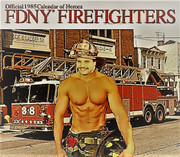
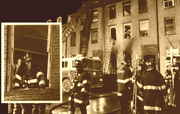


JohnnyGage said:?TOUGH TIMMY (TT)? Part 1
Meet TT
?Tough Timmy?. It wasn?t Tim, it wasn?t Timmy, it was ?Tough Timmy?. I called him Cap.
The first time I heard the name of my future boss was during the last few days of Proby school. My classmates and I were to graduate shortly, the fire department orders had just come out and we new shiney firefighters were anxious to see where we would be assigned. A lieutenant held the copy in both hands and began to read off the two-page, double column order. I kind of knew I was headed for the Bronx; I was pretty sure I was going to E 45. As the lieutenant read the names of firefighters going to 45 my name wasn?t mentioned. Hmmm, I thought. Then he gets to my name, ?Gage, you're heading to 88?, the Lt immediately looks up, with a grin and chuckle he says ?Good luck, kid, you?ll be working with the famous ?Tough Timmy?!
That day we could leave early and go to our assigned firehouse. I pulled up to the Belmont Ave firehouse and introduced myself to the housewatchman. I was the only firefighter assigned to E 88 from that order. The housewatchman told me to go into the back kitchen where the day tour Lt was. I introduced myself, the Lt was kind and introduced me to my new colleagues. Then he told me I will be assigned group 14, the ?Captains groups?. The kitchen erupted, ?Tough Timmy?! Just you wait... because he is going to eat you up!?
I would not get to meet my new boss for a few weeks. Captain Tim Gallagher was recovering from a heroic rescue of a mentally disabled teen in a window trapped by fire. He safely removed her but suffered severe burns. Later he would receive the Hugh Bonner medal for that rescue. But that did not let my fellow firefighters remind me of the daily countdown until ?HE? returns...But I?m getting ahead of myself?
Tough Timmy (TT) served with the Marines in Korea before coming to the FDNY. TT was the equivalent of the fiery NY Yankee skipper Billy Martin. Same build, same fiery temper. Look up in the dictionary the word ?scrapper?, next to the word will be his photo. He was fearless in firefighting and earned widespread respect for his bravery. He was wild, he broke all the rules. He loved fire duty. He organized the FDNY Hockey league years ago and continued to play (mostly fight) well into his 60?s. He skydived. He loved you or he hated you, there was no in between, and he let you know it. He was the Captain of Engine 88, and nobody would dare tell him what to do. TT was an old school legend, a war year firefighter to the core. A war year boss adjusting to the waning ?war years?.
Throughout my career I have had the privilege of working with hundreds of firefighters and bosses with a kaleidoscope of personalities. The personality that impacted me most was Captain ?Tough Timmy?. I had the pleasure of working literally side by side with this legend and witnessed some of the most incredible and zany ventures one would not expect. TT takes all the credit for molding me into the firefighter I became, I came to know him inside and out... It will be fun to share my recollection of an incredible boss and friend..and I have a few.
Thanks for reading; KMG 365.



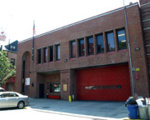
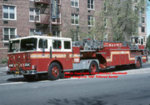
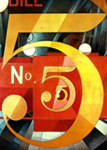
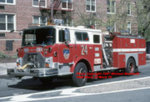
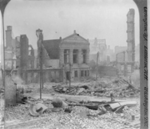
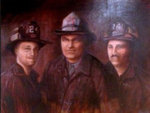

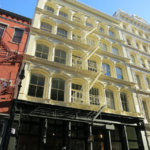
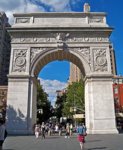
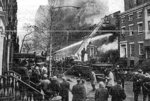
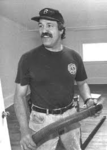

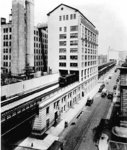
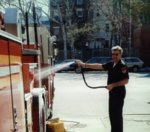
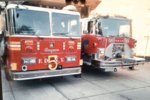
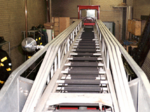


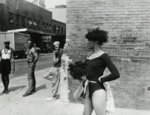


Wow! You blew my mind, yes indeed that is forthcoming! You put a grand smile on my face, actually my next article!Dan have you told of your experience as vice president of the Hook & Ladder 5 hot dog club and the rules to gain entry into said club?

Oh that's just a coincidence. (yeah right)the scaling ladder was removed from the rigs in the mid80s ironically around the same time a judge changed the physical requirements for the FDNY.
LADDER 5; P 6
LCC; ‘SQUASHING BAD HABITS’
One afternoon it was our turn scheduled to head for Randall's Island, “The Rock” for a hands-on firefighting tactic scenario. The scenario would be a ‘surprise’. We worked alongside an engine company from Queens at the “Class A” building that was designed to be a tenement with a railroad flat footprint. Into the drill the instructors incorporated a “Mayday, downed firefighter” problem. L 5 had to rescue and recover an unconscious ‘dummy’ firefighter and safely remove him from the tenement. That day we had a stellar crew with Lieutenant Mike Warchola at the helm and after all was said and done we passed the evaluation with flying colors.
Heading back home to the Village we were all giddy, sweaty and proud of ourselves, but just before exiting the Rock I noticed a very nice jolly ol’ chap on the grassy knoll politely waving and gesturing for me to stop the rig. In his hand I wasn’t sure if he was holding a Big Mac or camera, but nonetheless I pulled the rig to the curb. The gentleman approached with a fervent smile, he introduced himself and kindly requested to take a few snaps of our newly striped and lettered rig. And little did anyone know, that in this small world it would become the dawn of a remarkable friendship a short time later with me and the famous Mr. Willy!...I'm happy to present Mr. Willys iconic photo with yours truly behind the wheel in my office...
View attachment 2716
Thanks for reading! Hope you enjoyed. KMG-365
Dan, I guess that was my "Lucky Day".
As most of us know, there aren't too many tillers around. I think the FDNY has maybe 18-20, I'm not sure.
Here in Connecticut there's only four cities that have them. Norwalk has One, Meriden has One, New London has One and I think New Haven has Two.
In my experience, unless a firehouse has a long ramp, it's pretty tough to get that great shot of a long hook & ladder truck. In my younger buff days, FDNYs "The Rock" was the perfect place for that. Various pieces of fire apparatus are usually there training or for maintenance. I used to walk around there with my camera and portable scanner. Today of course for security reasons that is not allowed.
